Showing 37–48 of 201 results

Surveying the whole extent of Itihasa-Purana and sifting facts from myths, the book reconstructs millennia of ancient Indias political-cultural history (pre-Bharata war days to about ad 1200), with chronological details of all kingdoms that ruled.
In mankinds history, Indias is the longest literary tradition so ancient that it cannot be illustrated either by con- temporary books or from monuments. The Rigveda, indisputably the oldest literary work, was written at a time when many a great, old-world civilization lay in the wombs of futurity. And almost equal is the antiquity of the Puranas which, considered as the fifth Veda, figure distinguishedly among the traditional sources: Vedic Samhitas, Brahmanas, Srutis and Smritis, Dharmashastras, epics (the Ramayana and the Mahabharata), tantra manuals, and myriad Buddhist and Jaina texts, that have helped historiographers unravel the landmarks in the subcontinental civilization. Bulky and often crowded with legendary, religious and philosophical matters of various kinds, the PURANAS record the genealogies of Hindu deities, the reigns of the Manus, and chronicles of Solar, Lunar and other ancient dynasties. Professor G.P. Singh tries afresh to establish their historicity, surveying the whole extent of Itihasa-Purana: the early Indian historical tradition, founded on the Puranic literature. Meticulously sifting facts from myths, legends, and philosophic reflections in this monumental corpus of yore, the book reconstructs millennia of ancient Indias political and cultural history: from the pre-Bhrata War days to about 1200 ad (the post-Harsha period) with both genealogical and chronological details of all dynasties/ kingdoms that rose and fell in different regions of the Indian subcontinent. Contextually, the author analyses threadbare the Puranic evidence to also review the date of the Mahabharata War. In thematically exploring the historicity of all different Puranas, Dr. Singh is at pains to show how far the Puranic accounts are validated by other traditional writings on the one hand, and archaeological evidence on the other. With prolific bibliographic references and a number of chronological genealogical tables, his book will interest the scholars/ researchers of Indology, ancient Indian history and archaeology.
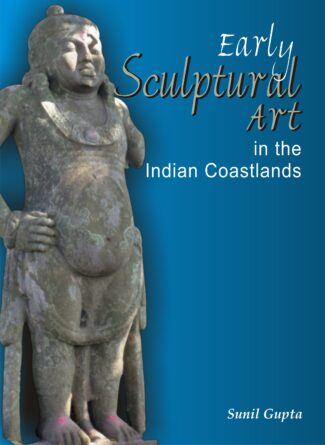
This work attempts to show that the coastlands were cultural melting pots, mediating, absorbing and often transcending the art of the interiors, i.e. the classical schools of Indian sculptural art at Mathura, Gandhara and Sarnath. The discussions in the nine chapters cover a broad range of sculptural art created in the Indian littoral regions between 300 bce and ce 500.
Scholars of early Indian art traditions have mostly viewed the coastlands as being marginal to the cultural efflorescences that happened in the interiors of the subcontinent. The classical schools of Indian sculptural art which blossomed at Mathura, Gandhara and Sarnath in the first half of the first millennium ce, have become axioms in the study of early Indian sculptural art. No discussion on early sculptural art can be complete without allusion to one or other of the schools. This work attempts to show that the coastlands, while influenced by the great schools of art, were nevertheless cultural melting pots in their own right, often transcending the art of the interiors. As staging areas of long distance maritime exchanges, the Indian coastlands have long mediated between the far civilizations of the Indian Ocean world (Egyptian, Arabian, Persian, East African and Southeast Asian) and the Indic cultural sphere. The coastlands are viewed as cross-cultural realms, places most conducive for absorption of new ideas and for syncretic manifestations. The discussions in the nine chapters cover a broad range of sculptural art created in the Indian littoral regions between 300 bce and ce 500. These include friezes in the rock cut caves of the Western and Eastern Ghats, decorated pillar capitals and free standing creations in stone and terracotta. Many of the observations are based on the author’s fieldwork on the Indian coastlands. Cover photo: Yakua image of stone inside a sacred grove in Haigunda Island, Uttar Kannada Dist., Karnataka, 4th century ce.
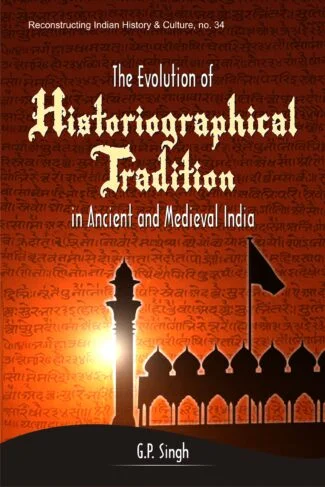
This volume attempts to present a systematic and comprehensive history of historical writing in ancient and medieval India. It discusses the beginnings of historical tradition, Buddhist and Jain traditions of historiography, writing of historical biography, chronicles, va§÷àvalã, and the tradition of historical writing in all states of India.
In India, historical writing was a tradition that evolved in different ways in the ancient, medieval and modern periods of history. Several traditions of historiography evolved during the centuries. This volume is an attempt to present a systematic and comprehensive history of historical writing in ancient and medieval India based on many original sources and works written in the modern times.
A well-researched, painstaking study, the book broadly discusses the beginnings of historical tradition, Buddhist and Jain traditions of historiography, and writing of historical biography, chronicles, vamsavali and other historical works, as well as the tradition of historical writing in South India. One of its main concerns is to bring out the contributions of people of different religions to the evolution of the tradition of historiography. It sheds light on the historical and semi-historical works of ancient and medieval historians of Indians to dispel the argument that ancient Indians had no tradition of historiography. It shows that ancient Indians had indeed a clear conception and perception of history, taking history as the soul of the nation. It states that conscious of the fact that the culture and civilisation of a country got reflected through its history, they took pains to preserve the historical records of the past.
The book will prove extremely useful to fill the vacuum existing in our knowledge about historians and historiography in ancient and medieval India.
Exploring Medieval India through Persian Sources revisits medieval Indian history through eleven authoritative and resourceful papers presented in a national seminar held at the Department of History, Aligarh Muslim University in 2016 by scholars of repute. The Persian sources include political chronicles, biographical accounts, Insha literature, mystic literature (malfuzat, maktubat, etc.), dastur of Amal, farmans, nishan, parwana, foreigners’ accounts, vernacular literature, epigraphy, numismatic, archaeology and paintings.
These papers should generate interest among the researchers to further showcase the world many a facet of India’s unknown intellect and history.

The book studies various phases of ancient Indian history and culture with a fresh approach by interpreting historical information. Relying on ancient Indian literature and outside accounts and explaining facts and theories lucidly, it presents rich insights on the social, economic, political and religious life of ancient Indians.
Facets of Ancient Indian History and Culture: New Perception is an attempt to study various phases of ancient Indian history and culture in a new light and present fresh approaches to understanding and interpreting historical information and evidences. Prof. G. P. Singh here examines aspects of ancient Indian social, economic, cultural, religious and political life, propounding theories for discussion and opening up new avenues for research. Examining works on the subject by eminent scholars, he offers valuable information, full with rich insights and innovative viewpoints, on the Aryans, the Cinas, society in the period of the Buddha and Mahavira, formation of classes, castes, and social and economic associations and institutions in the latter half of the first millennium bc, religious foundations of society at the time of Manu and Patanjali, pre-Persian expeditions into north-west India and political status of Assam under the Guptas. For the purpose, he relies upon a vast number of sources from texts of the Vedic and post-Vedic period and classical accounts of the Greeks and the Romans as also historical records of the Chinese, the French and the Germans to inscriptional and other findings, interpreting them all scientifically and objectively. The study explains facts and theories lucidly and with great stress on their historical accuracy, where concerned, and value, rendering the work extremely interesting and useful to students and scholars from varied disciplines history, archaeology, anthropology and sociology.
Mahatma Gandhi was a universal icon par excellence of truth, integrity, love and compassion. He was an epitome of non-violence, and his fondness for the well-being of humanity knew no bounds. He is the non-violence ambassador of India and Indianness across the globe. Many nations drew – still drawing – spirit and inspiration from him to achieve their freedom and to eradicate many a social malice from their society. He is a legacy of virtue and human value.
This coffee-table book makes one pictiorially travel through the different stages and realms in Gandhi’s life from him being a normal human being to a stature of a mahatma. Rather, from him being a child, a professional young lawyer to a towering personality in Mahatma Gandhi, the Indian political, social and spiritual leader who caused/forced the mighty British to give India, a country which was a treasure house for the British, Independence. It showcases the true image of the different facets of his life.
A mere glimpse across the book, brought out by the Gandhian Society, New Jersey, USA, on the occasion of Gandhi’s 150th birthday, makes one understand what Gandhi was and why is he so special to not only the Indians, but to any sane person throughout the world.

Based on decades scientific research this book projects India as the foremost country of the world where diamonds were discovered first. It explains past beliefs, present status of diamond mines, cutting-polishing industry, trade & marketing, and talks about future challenges and remedies to regain original glory.
India, for many millennia, was the diamond capital of the world and controlled the global diamond business. Indians were the first to discover, mine, curate and market diamonds in the world, and were the first to discover that diamond can be cut only by diamond, and can be polished with its own powder. Vedas, Upanishads and epics stand testimony to it. Diamonds were the quintessential luxury of the Indian royalty. Kohinoor, (Mountain of Light), Hope, Great Moghul, Orloff, Sansi, Hastings, Pigott and Akbar Shah-Jahangir Shah had unparalleled place in the annals of Indian and world history.
Till the seventeenth century, the Golconda Fort City in south India was the World Trade Centre of diamonds and was a dream destination for “who is who” in the diamond business. Though at present, diamond business is about $ 72 billion plus worldwide, India has very little to offer to this market size. New nations/countries are on the block and India has become a trivial entity in diamond production from the colonial period due to the monopolistic policy pursued by the British in favour of the new discoveries made in South Africa, and the socialistic policies of Independent India. Even the environmental concerns stood as stumbling blocks against the growth of Indian diamond mining industry.
The present study explores exhaustive data, based on a decade-long serious research, targeting common man. It brilliantly attempts to make one aware about the birth, history, glory, places of concentration, applications of diamond and about the present Indian diamond cutting and polishing industry. The book also introduces the readers into the reality of imitations, artificial diamonds, and discusses such products in detail. It delves deep into the identification and valuation techniques of diamond, and the tools used for the same. Efforts are also made to present many a superstition associated with diamonds, and to brief those diamonds that have some bearing on history.
After decades of Independence, India has failed to regain its lost splendour and leadership position. There is a need to bring changes in its approach to this industry to put it back on track and compete with the present world leaders. The author has given special attention to analyse the present diamond scenario in India and suggests remedies

Wide in content like an encyclopaedia, it covers everything about gold right from its physical and chemical properties, uses, history, birth inside the earth, the searching methods, exploration, mining, extraction, worldwide occurrences, world production, stockpiles, trade, marketing in the past, present and future, and usage as jewellery.
Gold has made a strong inroad into the human consciousness from time immemorial and we find its presence in the Indian Puranas, the Bible, the Koran and in many a religion including Sikhism. Being in human memory from 40000 BCE, it fascinated the Egyptians in constructing sacred gold artefacts, prompted Alexander the Great for gold coinage resulting into numerous invasions, inspired the Romans to mint gold coins, made Queen Cleopatra to wear gold facial foils to enhance her charm and decoratively covered many domes palaces and place of worship, including the Golden Temple, the citadel of Sikh faith and philosophy, and thus gold has maintained the most sought-after status among all precious metals. As jewellery, it is the quintessential part of the Indian psyche. It has survived all odds and is going strong even during the present economic turmoil. The book covers everything about gold right from its physical and chemical properties, uses, history, birth inside the earth, the searching methods, exploration, mining, extraction, worldwide occurrences from continent to continent, country to country and mine to mine, world production, stockpiles, trade, marketing in the past, present and future, and usage as jewellery. Like an encyclopaedia, this book describes everything about gold. This data-rich coffee table book is the first of its kind and is a sure hit with any avid reader of exploration, mining, geology and general knowledge.
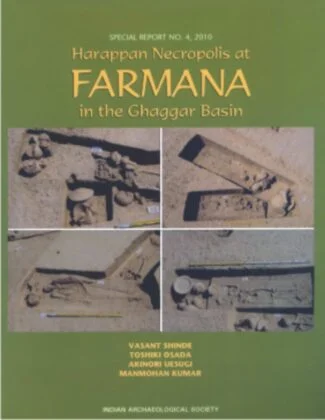
This book unfolds the unknown aspects of the Harappan civilization. It throws light on Harappan people’s composition, movement, dietrary habits and burials; and also on the study of human skeletal remains.
This book unfolds the unknown aspects of the Harappan civilization. It throws light on Harappan people’s composition, movement, dietrary habits and burials; and also on the study of human skeletal remains.
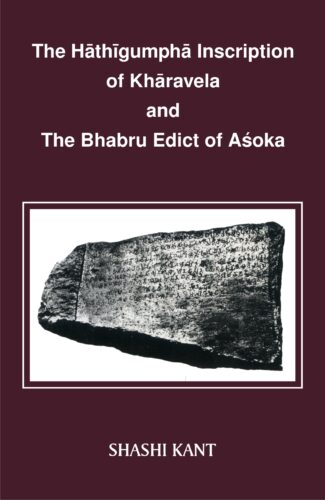
It examines the date, authorship and decipherment of the epigraph that throw light on Jain and Buddhist scriptural traditions and Asokas association with Buddhism as also the socio-political conditions during the three centuries before Christ.
Ever since its discovery in ad 1825, Kharavelas Hathigumpha Inscription has had a fascinating course. It is not a royal panegyric merely; it is an epitome of history, specially of the so-called dark period unveiling, as it does, the political and cultural conditions that prevailed in India during the three centuries before Christs birth. And yet more significantly, it is the only hitherto-known document to tell the saga of its heroic author: the first historical king from Indias eastern coast to lead extensive campaigns in different directions. But for this inscription, Mahameghavahana Kharavela could never have been resurrected from oblivion. Likewise personal in character is Ashokas Bhabru Edict, considered as the earliest written record of Buddhist scripture and monastic organisation. For the history of Buddhism, this little document is as important as the Kharavelas Hathigumpha Inscription is for that of Jainism. Shashi Kants study examines afresh these inscriptions: not just for their thematic similarity, but essentially for their crucial historicity. Going into their tenor and context, it is the first ever decipherment/interpretation of the two rare documents, with the whole Jaina and Buddhist traditions in the background. The author demolishes myths, addresses controversies and, these besides, offers convincing theories that are authenticated by recent archaeological findings. Acclaimed and favourably reviewed in India and elsewhere alike, this epigraphic study is now in its second, enlarged edition including a whole new section on the genesis of the Prakrit languages and the ancient Indian scripts. Together with the original epigraphs, their romanised transliteration and English translation, it holds out immense appeal to the scholars of ancient Indian history, epigraphy, archaeology, and Buddhist-and-Jaina studies.
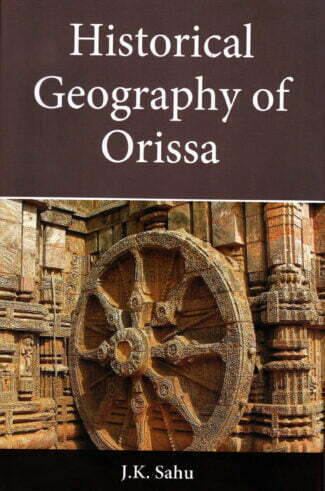
This work presents a study of the historical geography of Orissa. It uses literary and other sources to delve into the ancient, medieval and modern periods of Orissas growth and underline the historico-geographical significance of various kingdoms.
The region of Orissa, from the point of view of studies in historical geography, has always remained a challenging area, not least owing to its vast and complicated history, varied geography and intriguing sources. Though the historical geography of this region has been considered for analysis in the past, it has only been featured as a chapter or in a section as part of a larger whole. Thus, this work is perhaps the first attempt to present a comprehensive research study of the historical geography of Orissa. The author, guided by long research experience, culls material from all available sources literary, epigraphic, etc. to subject the theme to a systematic analysis that leaves not a facet of the subject unexplored. He describes and delves into the ancient, medieval and modern periods of historical growth to underline the historico-geographical significance of various kingdoms and places of importance that emerged, flourished and disintegrated at different times as Kalinga; South Koshala; Odri, Utkala or Toshala; Trikalinga; and the many Mandala states. He studies the physical features of the area, the mountain system of the Orissa state and its rivers, with a view to showing how they have shaped its history. The transport and communication routes in the region since ancient times are retraced to reveal the regions strong cultural and economic foundations among other things. This book, from first to last, unfolds a wealth of interesting and useful information. Complete with an exhaustive bibliography, index and maps of Orissa, the book can immensely aid further research works on the subject.
The region of Orissa, from the point of view of studies in historical geography, has always remained a challenging area, not least owing to its vast and complicated history, varied geography and intriguing sources. Though the historical geography of this region has been considered for analysis in the past, it has only been featured as a chapter or in a section as part of a larger whole. Thus, this work is perhaps the first attempt to present a comprehensive research study of the historical geography of Orissa.
The author, guided by long research experience, culls material from all available sources — literary, epigraphic, etc. — to subject the theme to a systematic analysis that leaves not a facet of the subject unexplored. He describes and delves into the ancient, medieval and modern periods of historical growth to underline the historico-geographical significance of various kingdoms and places of importance that emerged, flourished and disintegrated at different times — as Kalinga; South Koshala; Odri, Utkala or Toshala; Trikalinga; and the many Mandala states. He studies the physical features of the area, the mountain system of the Orissa state and its rivers, with a view to showing how they have shaped its history. The transport and communication routes in the region since ancient times are retraced to reveal the region’s strong cultural and economic foundations among other things.
This book, from first to last, unfolds a wealth of interesting and useful information. Complete with an exhaustive bibliography, index and maps of Orissa, the book can immensely aid further research works on the subject.
| There are no products |